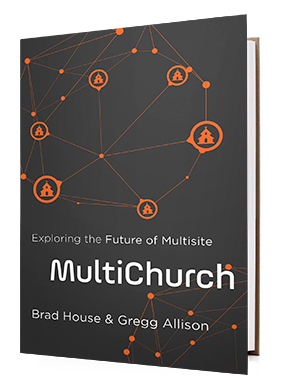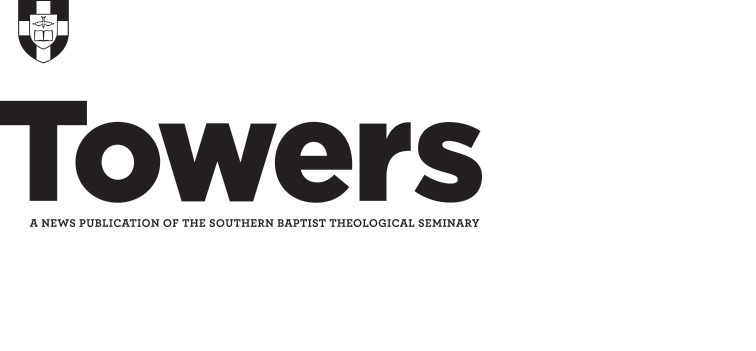MultiChurch: Exploring the Future of Multisite by Gregg R. Allison and Brad House (Zondervan 2017, $17.99)
Multisite churches — often like the ones you see on Sunday morning television —include multiple locations with individual worship teams, leadership, and frameworks for ministry, including somewhat of a “brand” for their church. While this model of church growth is common as churches expand beyond their facilities, it often promotes individuality and autonomy instead of collaboration and community among the different campuses.
In their new book, MultiChurch: Exploring the Future of Multisite, Southern Seminary professor Gregg R. Allison and Brad House, executive pastor of ministry at Sojourn Community Church, discuss the differences and benefits of a multichurch model for today’s growing congregations. 
Multichurch, as opposed to multisite, is defined by Allison and House as “one church made up of multiple independent churches,” and “a local community of Christians that matures and multiplies its influence through launching, developing, and resourcing multiple congregations to reach its city with the gospel of Jesus Christ.” These independent churches work toward one common goal, while collaborating with each other for the good of their communities.
Allison and House discuss several models of churches, including the pillar model, the gallery model, franchise model, cooperative, collective, and network models. The authors explore each model in light of biblical prescriptions, examining both the strengths and weaknesses of each church model. They believe church leaders can learn from different models, appreciating aspects of each as expressions of the creativity of God in humanity.
“When we see the creative character of God in the innovative impulse to advance his kingdom, we become encouragers and counselors rather than critics,” they write. And “by regarding the creativity of others as imaging our creative God, we are free to appreciate, evaluate, and even learn from different models.”
In addition to using an individual’s gifts for the good of the church, presence is an essential — and specific — aspect of the multichurch model, avoiding video simulcasts and encouraging churches and their leadership to meet together regularly.
“Unlike multisite, multichurch is more than a church growth strategy. Multichurch encourages, with intentionality, the multigifted members of the church to develop into the vibrant, mature, and multiplying body God calls them to be,” they write.
Not only does a multichurch model encourage multiplication for the flourishing of communities, it promotes unity through diversity, encouraging all members to use their gifts and abilities for the growth of the church. It provides opportunities for service in unique ways: from teaching and discipleship opportunities to missions, evangelism, and programs such as ESL training. The whole point of multichurch, Allison and House write, is to promote interdependent churches for multiplication, maturity, and building the kingdom of God through contextualized church bodies.
From how to organize church polity to money to membership and ministries, Allison and House provide a thorough history of multisite churches and where they believe multisite needs to go in order for healthy, interdependent congregations to thrive for the good of both the members and the cities they minister to. While the multichurch model is not for every church, this book provides a helpful guide for any pastor or leadership team thinking through multichurch options as their church grows.
“A multichurch believes the gospel changes everything: individuals, marriages, families, neighborhoods, educational/social/economic/political structures, working conditions, and systemic sins like racism, sexism, and abortion,” they write. “A multichurch fosters a climate where leaders do life and ministry together. It nurtures service where members are equipped to exercise their spiritual gifts and are challenged to develop as leaders.”




